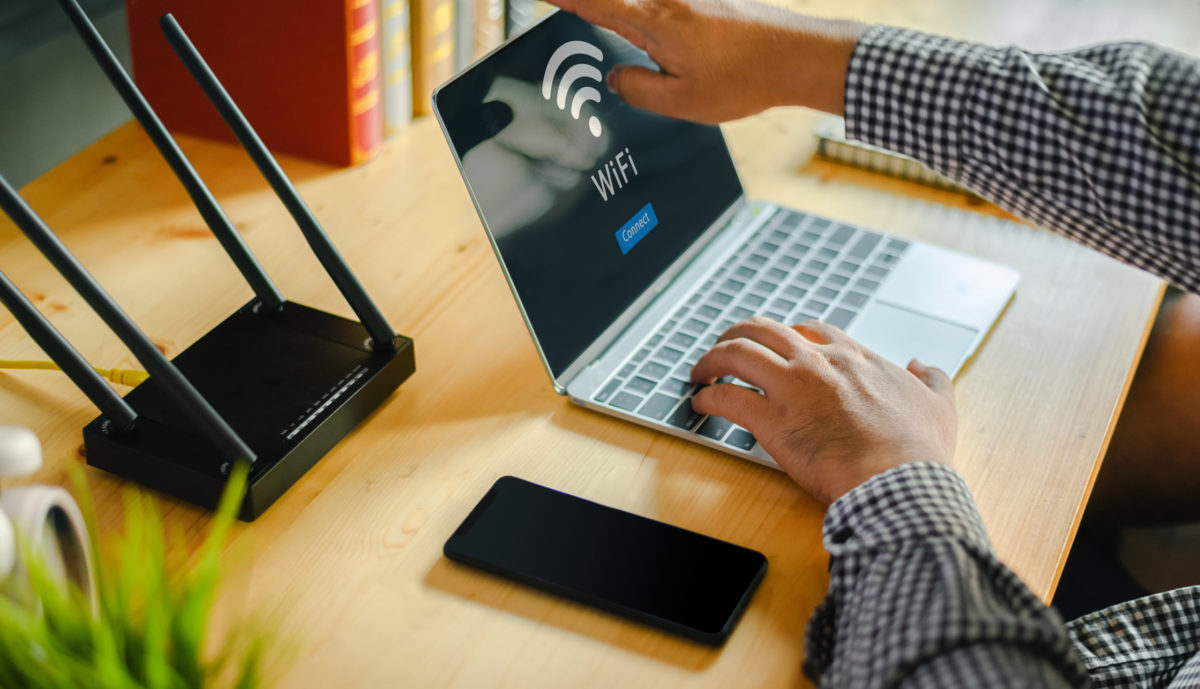Affordable Internet Without a Phone Line and Budget-Friendly Business Plans

Why Go Without a Phone Line?
Gone are the days when internet meant being tied to a landline. With modern tech like 5G, fiber, and cable, you can get high-speed internet without the extra cost of a phone you’ll never use. Plus, businesses can find tailored plans that deliver the speed and reliability they need without bloated contracts. Let’s dive into the best options for both home and business users looking to save some cash.
Related: Is Fiber Internet Better Than Satellite Internet?
Cheap Internet for Your Home (No Phone Line Needed)
1. 5G Home Internet: Fast and Wireless
5G home internet is a game-changer. It uses cellular networks to bring high-speed internet right to your home through a wireless modem—no cables, no phone lines, no fuss. Here are some top picks:
-
T-Mobile 5G Home Internet: For $50–$70 a month, you get speeds between 87–415 Mbps, no data caps, and no contract. If you’re already a T-Mobile mobile customer, you could score a discount, dropping the price to as low as $35 a month. The equipment’s included, and setup is a breeze.
-
Verizon 5G Home Internet: Plans range from $35–$80 a month (with Auto Pay and a qualifying phone plan), offering speeds up to 1,000 Mbps in some areas. You get a three-year price lock and free self-installation, which is perfect for keeping costs down.
-
AT&T Internet Air: Starting at around $60 a month, this is a solid choice if you’re already with AT&T for mobile. Bundle it with a phone plan for extra savings.
Why It’s Great: Super easy to set up, widely available (even in rural spots), and no phone line needed. The Catch: Speeds can dip depending on your signal strength or network traffic.
2. Fiber Internet: Speedy and Reliable
Fiber internet is the dream for heavy users—think gamers, streamers, or households with a million devices. It uses fiber-optic cables for blazing-fast, stable connections, and you don’t need a phone line.
-
Google Fiber: Where available, Google Fiber gives you 1,000 Mbps for $70 a month—no contracts, no data caps, and free equipment. At just 4 cents per Mbps, it’s a steal for the speed.
-
AT&T Fiber: Starts at $55 a month for 300 Mbps with unlimited data and no contract. It’s great for busy households.
-
CenturyLink Fiber: Plans begin at $55 a month for 100 Mbps, no annual contracts. Watch out for the $15 monthly modem fee or a $99 installation charge if you can’t self-install.
Why It’s Great: Lightning-fast, reliable, and no phone line nonsense. The Catch: Fiber’s not everywhere, especially in rural areas.
3. Cable Internet: Widely Available
Cable internet is a go-to for many because it’s available almost everywhere and doesn’t require a phone line. Big names like Xfinity and Spectrum have budget-friendly plans.
-
Xfinity: Their Internet Essentials program offers 75 Mbps for $14.95 a month for low-income households, or you can get prepaid plans starting at $45 for 200 Mbps.
-
Spectrum: Starts at $50 a month for 500 Mbps, with no contracts and a free modem. Just keep an eye on price hikes after the promotional period.
Why It’s Great: Easy to find, solid speeds, no phone line. The Catch: Prices might creep up after the promo ends, and some plans have equipment fees.
4. Satellite Internet: For Remote Areas
If you’re out in the sticks where cables don’t reach, satellite internet has your back. It uses a dish to connect, no phone line required.
-
Starlink: At around $120 a month, you get speeds up to 200 Mbps with low latency. It’s a lifesaver for rural homes, but the upfront equipment cost can sting.
-
Viasat and HughesNet: Plans start at $50–$100 a month for speeds up to 100 Mbps. Viasat’s equipment is a bit better, but watch out for data caps.
Why It’s Great: Works almost anywhere, no infrastructure needed. The Catch: Pricier, and weather or data limits can be a hassle.
5. Low-Income Programs: Big Savings
If your budget’s tight, check out programs for low-income households. The Affordable Connectivity Program ended in May 2024, but there are still ways to save.
-
Lifeline: A government program that knocks $9.25 off your monthly internet bill (or $34.25 on tribal lands) if you qualify.
-
Spectrum Internet Assist: Get 50 Mbps for $25 a month with no data caps if you meet eligibility requirements.
-
Xfinity Internet Essentials: Offers 75 Mbps for $14.95 or 100 Mbps for $29.95 a month for qualifying households.
Why It’s Great: Super affordable, no phone line needed. The Catch: You’ll need to meet income or program eligibility rules.
Affordable Business Internet Options
Running a small business means you need internet that can handle everything from Zoom calls to cloud backups without costing a fortune. Here’s what’s out there:
1. Google Fiber for Business
Google Fiber’s business plans start at $70 a month for 1,000 Mbps, with no contracts, no data caps, and free equipment. You also get 24/7 support and mesh extenders for better Wi-Fi coverage.
Why It’s Great: Fast, reliable, and no long-term commitment. The Catch: Only available in certain areas.
2. T-Mobile for Business
T-Mobile’s business internet starts at $60 a month for speeds of 91–361 Mbps, with no contracts and a free Wi-Fi 6 router. New customers might snag a $200–$300 virtual prepaid Mastercard.
Why It’s Great: Affordable, flexible, and great for remote teams. The Catch: Speeds depend on your location and network.
3. CenturyLink Business Internet
Starting at $55 a month for 100 Mbps, CenturyLink offers no annual contracts. Fiber plans go up to 940 Mbps for $65–$75. Installation might cost $25–$149, and modems are $15 a month to lease.
Why It’s Great: Decent pricing, no contracts. The Catch: Extra fees and limited fiber availability.
Related: Free VPN App Best Internet Security Recommended- iTop VPN
4. Spectrum Business
Spectrum’s business plans start at $64.99 a month for 300 Mbps, with no contracts and a free modem. Some plans come with a three-year price guarantee, and bundling with phone or mobile can save more.
Why It’s Great: Widely available, no data caps. The Catch: Prices may rise after the promo period.
How to Pick the Perfect Plan
-
See What’s Available: Plug your zip code into a provider’s website or a tool like BroadbandNow to check options in your area.
-
Know Your Speed Needs: For homes, 100–300 Mbps handles most tasks. Businesses with multiple users might want 500 Mbps or more.
-
Watch for Sneaky Fees: Go for plans with no contracts, free equipment, and clear pricing to avoid surprises.
-
Bundle for Savings: If you’re with T-Mobile, Verizon, or AT&T for mobile, bundling can cut your internet bill.
-
Check Low-Income Options: Programs like Lifeline or Internet Essentials can make a big difference if you qualify.
Wrapping It Up
Getting affordable internet without a phone line or budget-friendly business internet is totally doable in 2025. From 5G home internet with T-Mobile or Verizon to fiber from Google Fiber or cable from Spectrum, there’s something for every budget and location. Even rural folks can rely on Starlink, and low-income programs offer serious savings. Take a minute to check what’s available in your area, think about your speed needs, and look for deals to keep costs low. You’ll be online in no time without burning a hole in your wallet.
ADVERTISEMENT





